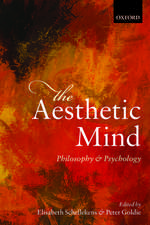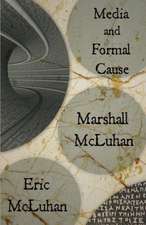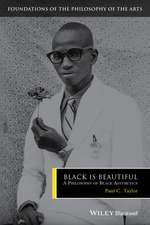A History of Light: The Idea of Photography
Autor Junko Theresa Mikuriyaen Limba Engleză Hardback – 14 dec 2016
| Toate formatele și edițiile | Preț | Express |
|---|---|---|
| Paperback (1) | 235.91 lei 6-8 săpt. | |
| Bloomsbury Publishing – 17 oct 2018 | 235.91 lei 6-8 săpt. | |
| Hardback (1) | 772.33 lei 6-8 săpt. | |
| Bloomsbury Publishing – 14 dec 2016 | 772.33 lei 6-8 săpt. |
Preț: 772.33 lei
Preț vechi: 1112.06 lei
-31% Nou
Puncte Express: 1158
Preț estimativ în valută:
147.78€ • 154.71$ • 122.28£
147.78€ • 154.71$ • 122.28£
Carte tipărită la comandă
Livrare economică 07-21 aprilie
Preluare comenzi: 021 569.72.76
Specificații
ISBN-13: 9781474254175
ISBN-10: 1474254179
Pagini: 192
Dimensiuni: 156 x 234 x 18 mm
Greutate: 0.44 kg
Editura: Bloomsbury Publishing
Colecția Bloomsbury Academic
Locul publicării:London, United Kingdom
ISBN-10: 1474254179
Pagini: 192
Dimensiuni: 156 x 234 x 18 mm
Greutate: 0.44 kg
Editura: Bloomsbury Publishing
Colecția Bloomsbury Academic
Locul publicării:London, United Kingdom
Caracteristici
Covers an immense span of philosophical thought from ancients to contemporary continental thought
Notă biografică
Junko Theresa Mikuriya is Senior Lecturer in Photography at the London School of Film, Media and Design, University of West London, UK. She is an Honorary Fellow of the School of Arts, University of Kent, UK.
Cuprins
Acknowledgements Notes on References Introduction1. Plato's Allegorical Camera-Cave2. Plato's Chora and the Uneasy Place of Photography3. Iamblichus's Receptacle of Light4. Photographing the Divine: Philotheos of Batos5. Marsilio Ficino: Light and PhotosensitivityCoda NotesBibliography Index
Recenzii
Theresa Mikuriya's The History of Light is a startling contribution to the history of photography, to the issue of the relation between philosophy and light, and to accounts of the history of technology. She shows how photography is latent in Platonism and makes powerful persuasive readings to support this. Plato's cave and its arrangement are treated as the description of a camera obscura; the Platonic category of chora is read as photography itself; the mystical union with God can lead to being blinded and is here read as overexposure; Ficino's description of the paradoxical nature of the ascent to light together with the need to bring divine light into the world is treated as a form of photosensitivity. These readings are a rich instrument with which to imagine the history of light. The argument goes a long way to think out Derrida's remark, "Every photograph is of the sun."
Mikuriya leads us on an intriguing exploration of the 'deep time' of photography. This bold and audacious alternative history stretches from the shadows of Plato's cave to esoteric writings on light and illumination in early Renaissance. It adds a new and compelling dimension to debates around the 'philosophy of photography', refusing to naturalize either the photographic or the philosophical, but instead probing the intimate entanglement of these domains.
Theresa Mikuriya sustains her investigation of the historical and philosophical [real] traces of photography all the way back to its earliest possibilities. She teaches us to see before the image and shines light on philosophy, showing where photographs come from, before we even knew they had been, or could be, developed. This metaphysics of the photography is the framing that makes Kodak possible in the centuries before Daguerre arrived. This book should transform our understandings of the visual.
Mikuriya leads us on an intriguing exploration of the 'deep time' of photography. This bold and audacious alternative history stretches from the shadows of Plato's cave to esoteric writings on light and illumination in early Renaissance. It adds a new and compelling dimension to debates around the 'philosophy of photography', refusing to naturalize either the photographic or the philosophical, but instead probing the intimate entanglement of these domains.
Theresa Mikuriya sustains her investigation of the historical and philosophical [real] traces of photography all the way back to its earliest possibilities. She teaches us to see before the image and shines light on philosophy, showing where photographs come from, before we even knew they had been, or could be, developed. This metaphysics of the photography is the framing that makes Kodak possible in the centuries before Daguerre arrived. This book should transform our understandings of the visual.














